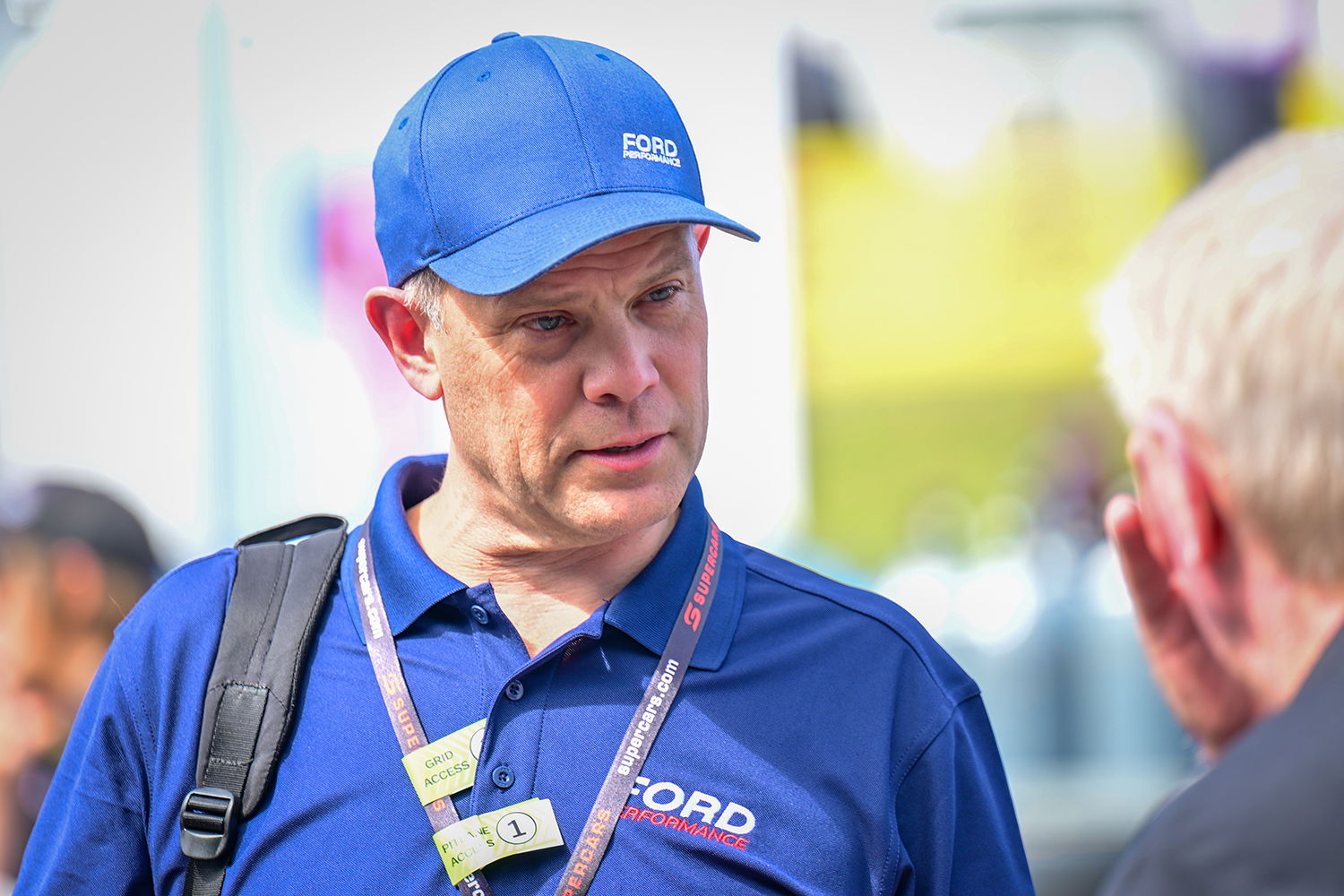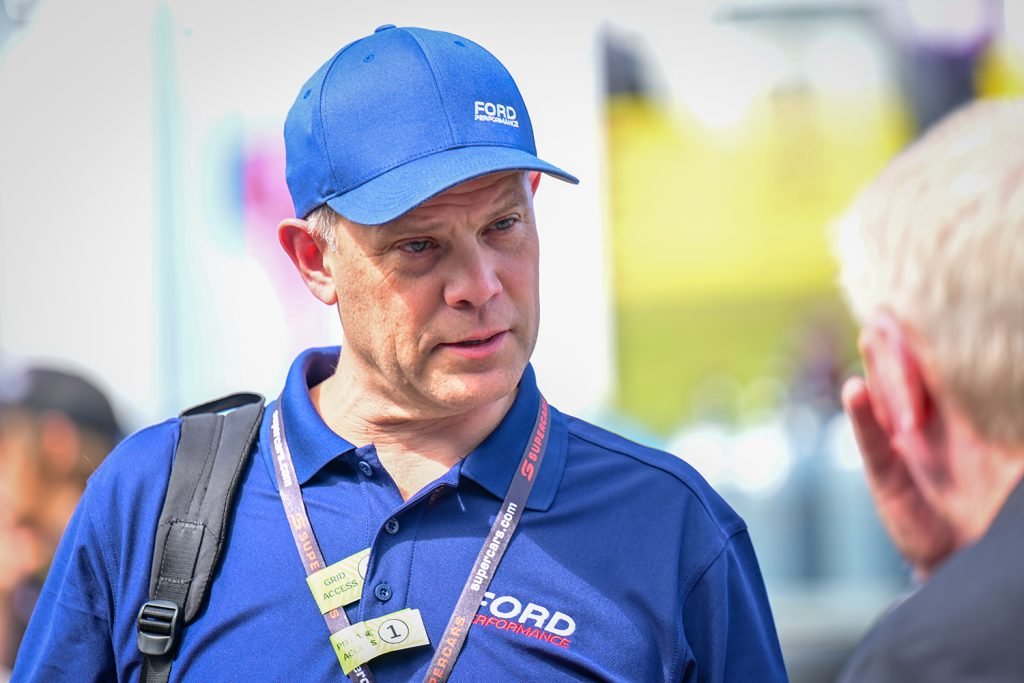

Rushbrook is in attendance at this weekend’s Thrifty Bathurst 500, where the Ford SuperVan 4.2 has been in action at Mount Panorama.
However, his return to Australia also comes at a key time in the context of Supercars, being the start of the second season of the Gen3 ruleset, after the first was marred by year-long parity squabbles.
Already, the evidence suggests that, if indeed a disparity exists, then the Ford Mustang is on the wrong end of it, based on results and straight-line speed at Bathurst, a point made by Walkinshaw Andretti United’s Chaz Mostert.
Rushbrook, though, was unwilling to express any hard conclusions when he fronted media including Speedcafe today, although he left open the possibility that there is still an engine disparity.
“Overall, we still need to keep looking at all the data, right?” he said.
“We don’t want to jump to conclusions from the data that we’ve seen so far, from the on-track performance that we’ve seen so far.
“It’s ‘version 4.0’ with the Mustang [aerodynamics], and it takes time for the teams to come to grips with that new aero map and make sure they’re optimising that set-up.
“But, we’re obviously looking at all the data that we have available closely to see where we really stack up.”
Asked directly if technical parity exists today, Rushbrook answered, “We don’t know, right? Honestly.”
“The way the series defines it with aero, yes, we do,” he added.
“The way the series defines it with AEP [Accumulated Engine Power], they would say yes, using that historical process.
“But, when we go on the AVL [transient dynamometer], then we will really find out.”
Rushbrook was firm, though, when queried if Ford can be championship contenders this year.
“Absolutely,” he simply replied.
Mostert had hailed Supercars’ investment in off-season wind tunnel testing and observed that “the cars looked quite balanced across the top,” after the category confirmed to Speedcafe around a week ago that it had signed off on aerodynamic parity, but he did express a desire for more work on the engine front.
“Completely agree with that,” said Rushbrook.
“So, we know that the processes that are here today, or that were in Supercars – historically, leading up to this – we knew that aero wasn’t sufficient, and it’s great that Supercars has embraced that now and gone to Windshear [wind tunnel], to a controlled test, with a process that’s aligned with both manufacturers, with both homologation teams, and we believe we’ve got a good outcome there.
“We’ve said from day one, from three years ago, that AEP, using the [static] dyno that’s available here, is not sufficient, especially when you get to two different engines, different displacement, different architecture… The transient response is going to be different.
“So, it may look the same – AEP may say it’s the same – it doesn’t mean it is the same.
“We’re certainly seeing that, in terms of the engine that we had last year, even the engine with improvements that have been made to the engine, still measures the same AEP, but it still races differently.
“The ultimate goal is a proper transient dyno, [and] there is a commitment that that testing will happen, so we can characterise the two different engines on there.
“I expect that we will see differences there that we did not see on the dyno here, but then we’ve got to be prepared to make those changes there and bring it back onto the race track.”
Ford figures have long suspected that there is a transient disparity between its 5.4-litre quad cam engine and the 5.7-litre ‘LTR’ which powers the Camaros, although a static dynamometer would not detect such a discrepancy and hence the push to transient dynamometer testing.
Mostert will line his #25 Mobil 1 Optus Mustang on the outside of Broc Feeney’s Triple Eight Race Engineering Camaro on the front row of the grid this afternoon for Race 2 of the 2024 Repco Supercars Championship at Bathurst.




















Discussion about this post